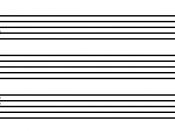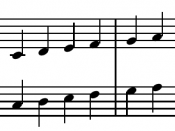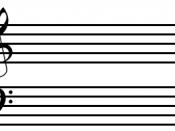Before 1450, there was little form of musical notation, instead word-of-mouth transmission of information was what was used, and this was far from reliable. The most common form of music performed was the praising of the Lord by monks in a monastery by means of chant. It was at this point, when music was becoming more of an art form than a means of entertainment, that a form of notation was deemed necessary. European composers were flourishing in numbers and performers of chants were frustrated with not knowing the pitch or rhythm with which to perform their music.
It is unknown to historians who originated the idea of musical notation but the recognition for it was given to Pope Gregory I, hence the reason most chants of that era are referred to as Gregorian chants. Advantages associated with the idea of musical notation included the reproduction of pieces of music so that they could be sent to a central location, such as Rome, and appreciated by more than one church.
It was thought that with many monasteries all knowing the same music it would allow monks to worship God more fully.
The first development of such notation was using what was known as "neumes". These were, basically, small squiggles that were drawn above written text. This was devised to give some indication of pitch, as the further the marks above the text, the higher the pitch was, and so on. The shape of the mark would imply the length of the note and whether or not it remained the same pitch throughout the word or moved up or down within one word. The marks looked similar to that of a graphic score today, and the method of reading a graphic score is very much the same as the method...



Good facts
Large number of facts. The essay lacks an argument and does not greatly prove its thesis statement. Good reference for a term paper.
5 out of 5 people found this comment useful.